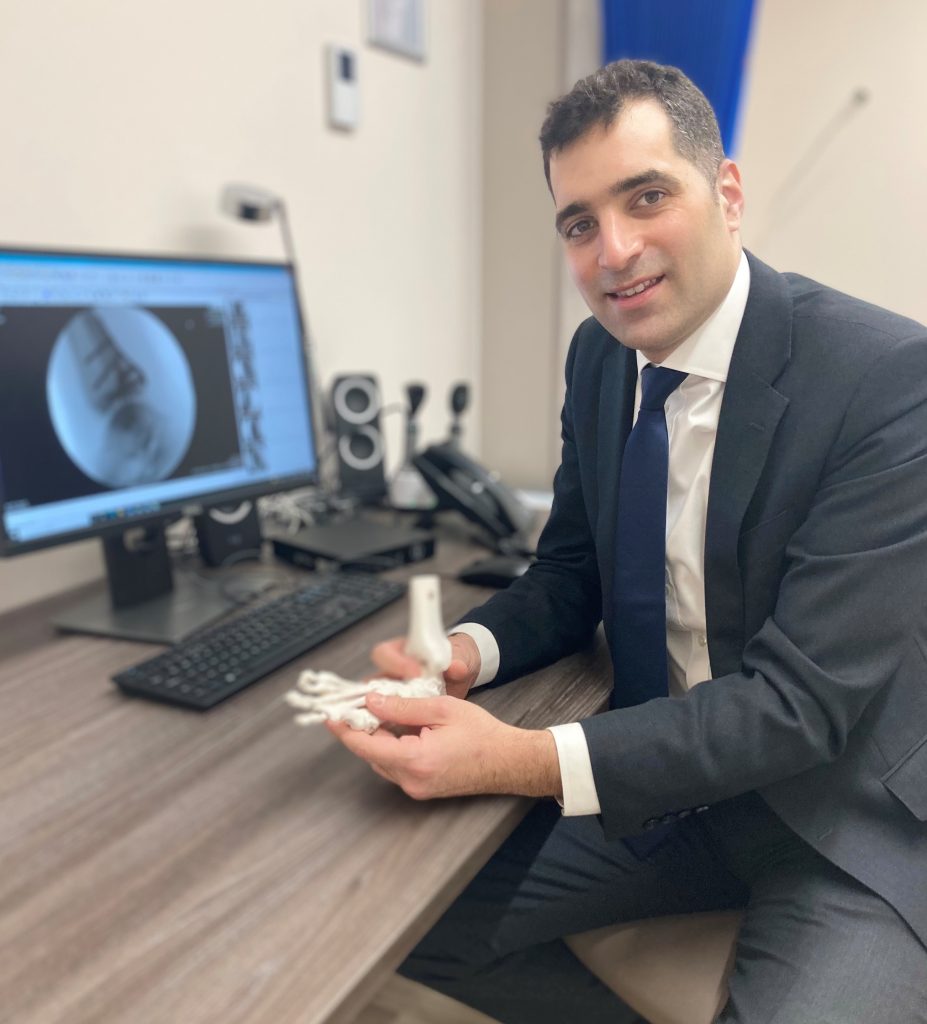Anyone can develop a bunion but they are most common in women over 30. It is estimated that over a third of women over 30 will have bunions at some point in their life. But what exactly is a bunion and what can be done about them?
In this recent article, featured in The Jewish Chronicle, Mr Simon Mordecai, Consultant Trauma and Orthopaedic Surgeon at One Hatfield Hospital, tells us more.
What is a bunion?
A bunion (also called Hallux Valgus) is a bony bump that forms on the side of your feet, at the joint at the base of your big toe. It occurs when your big toe starts to bend towards your smaller toes, forcing the joint at the base of your big toe to stick out. Bunions can make walking around and wearing shoes extremely uncomfortable.
What causes bunions?
The exact cause is unknown, but there are definitely factors that can increase your risk of developing them. Genetics, arthritis, gout and the way you walk can all contribute. But footwear is the big one. Ill-fitting or high heeled shoes force the foot into an unnatural position, putting a lot of extra strain on your bones and muscles in your foot.
What are the symptoms?
Your symptoms are likely to be pain in the joint of your big toe, pain along the side or underneath your foot (made worse by walking and wearing shoes), red inflamed skin around the bump, a swollen big toe and your big toe is pointing towards your other toes. You may not have all of these symptoms; in some cases, bunions may not cause pain.
Is it easy to diagnose a bunion?
Bunions can easily be diagnosed through clinical assessment and examination. X-rays are also very useful to show the extent of the bunion as well as ruling out any other pathology in your foot such as arthritis.
Is surgery the only option?
There are many things you can do to help manage your symptoms before surgery is considered. Firstly, avoid high heels or tight, pointy shoes. Shoes with a wide toe-box, a low heel and a flexible sole are your friend! To help relieve pain, you could take simple pain killers and apply an ice pack for up to 5 minutes at a time. Bunion pads and toe spacers, which you can get from your pharmacy, can also help with pain from shoes rubbing.
If the pain doesn’t improve, is worsening, stopping you performing your normal activities, or causing your other toes to become deformed or painful, I would then consider surgery. Surgery is the only option to actually remove the bony bump and correct the deformity.
What does bunion surgery involve?
The surgery involves making a small cut over the big toe, removing any bony bumps, and performing an osteotomy. An osteotomy involves breaking the bone and realigning it. Once the toe is straightened, it is held in place with a couple of small screws or staples. These are left in permanently and don’t usually cause any problems.
The surgery is performed under a general anaesthetic and takes around one hour. Most people go home the same day.
How is the pain?
It can sometimes be painful for the first couple of days after surgery. You will be given some pain killers when you leave hospital, and they are usually only required for the first week following your surgery. The most important thing is to elevate your foot as much as possible which will help reduce the swelling and pain.
How long does it take to recover from bunion surgery?
As we have broken and realigned the bone in your foot, it can take time to fully recover. It typically takes around 6 weeks for the osteotomy site to fully heal. It may be 6- 8 weeks before you can return to work and driving. However, you would usually be walking around carefully after 2 weeks in the supportive shoe provided.


 One Ashford
One Ashford One Hatfield
One Hatfield